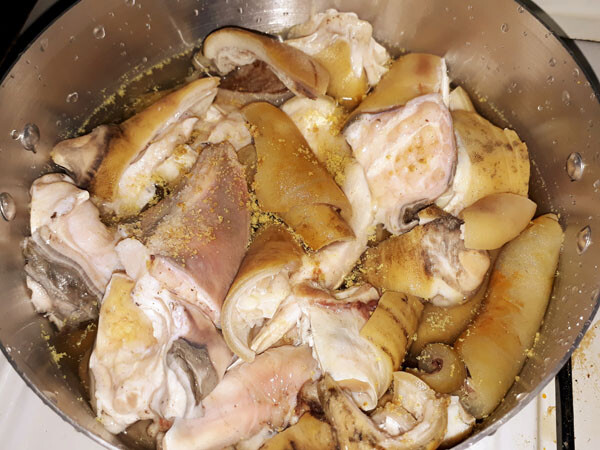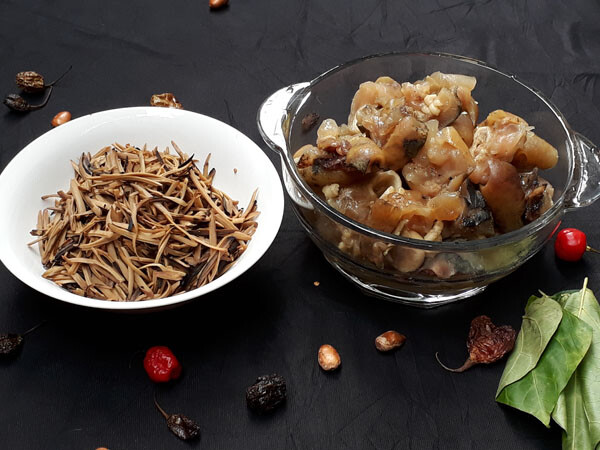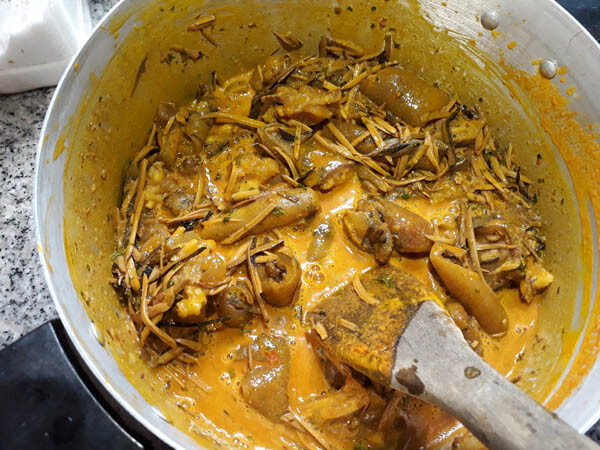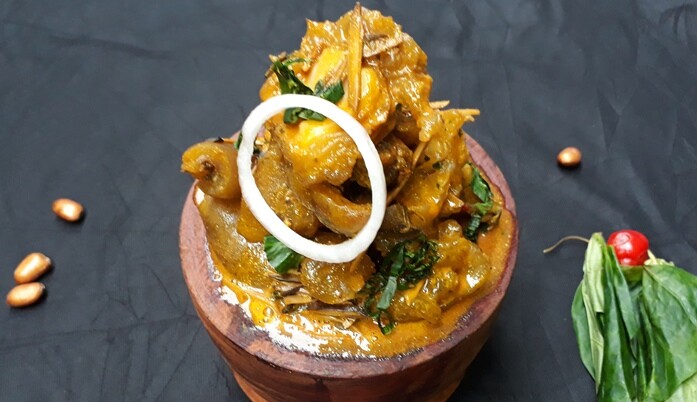Nkwobi
How to Make nkwobi, one of the Nigerian’s most popular evening meals.
Over the years I have received countless number of questions from members of the Nigerian Kitchen who require tips on making Nkwobi.
This evening meal has been around for a very long time, initially it was made with just bush meat (edible wild animals), the likes of squirrel, grass cutter, rabbit and even antelopes could be used to make nkwobi but along the line people starting experimenting with domestic animals and even poultry birds.
If you are among the folk that are asking “what is nkwobi?” here is a simple definition; It is Igbo delicacy that is made with different kinds of meats, in a little while you will read all the processes involved in making it and why it is very popular in the eastern part of Nigeria. You will also learn about all the ingredients used in making it and different kinds of meats that could also be used.
I remember vividly the first time I had a plate of Nigerian nkwobi, it was very delicious and very pepperish. Although you can use pepper to your taste. The last recipe I ate was made with chicken, but like I said initially, your choice of meat can vary but the methods remain the same.
Here are the ingredients that are used in making Nigerian nkwobi (for five to ten persons.)
1 kg Meat (chicken, wild meat, goat, cow foot, assorted meat)
2 cubes of knorr
10 leaves of utazi
Edible potash (one teaspoon)
Palm oil 200ml
Ugba – 1 cup
10 Peppers (Scotch bonnet)
Onions – 2 slice
3 seeds of ehu (calabash nutmeg)
Salt to taste
In this recipe, I will be using cow foot as you can see below.

The first step is parboiling the meat with some ingredients; onions, 2 cube of stock cubes and salt will be enough. Then allow to cook for another fifty to sixty minutes until the meat is completely soft.
This is necessary because nkwobi as well as Nigerian pepper soup is basically made with very soft meats, just so it is not hard to chew.
This is what you get.

Most preparation processes take place in a small mortar, (an African carved hollow wood), but you can use a pot if you are not in Nigeria. This is just how it has been, some of Nigerian food customs have been around for years and we probably haven’t found a credible reason why they should be revoked.
Slice the onions and utazi, then set aside on a plate, some people choose to add these two during the preparation process while others use them for decoration purposes. One way or another, Utazi and onions should be part of the ingredients used in preparing Nigerian Nkwobi.
You can boil the ugba in small amount of water for about 2 to 3 minutes, this technique helps eliminate the fermenting bacterias. Note that this ingredient is processed with the help of a harmless bacteria. This is just to be on the safe side even though most Nigerians eat ugba without heating it.
Cook the meat until it is almost dry, check to see the level of water. This is necessary so you don’t end up with another kind of pepper soup, Stir the cooking meat in the pot to be sure that it doesn’t burn. Did I say that it is also necessary to cut the meat in small sizes?
Dissolve the potash in about 250ml (one cup) of water and filter about half a cup into the pot, you will learn a little bit about this from the video below. You will know exactly how this is done, although most Nigerians are familiar with this technique.
Add about half a cup of palm oil into the pot, stir to obtain a thick yellow paste (ncha) and you are just few steps away from having a very delicious nkwobi, also add two spoons of ground crayfish, Ugba, pepper and salt to taste, then stir very well before adding the meat.


Once you have the “ncha” add the ugba, a pinch of salt, a stock cube and [utazi leaves, ehu and peppers] (all pounded together)
Stir together and add the meat.
Note: If the meat is too hot, it would dislove the “ncha” and turn it redish> allow the meat to cool for 20-30 minutes before using.
The utazi is very necessary because it adds a faint bitter taste which is an integral part of nkwobi. You pound some and you slice some.
Stir and serve. This is what you get.

Most times I serve nkwobi and boiled white yam, that’s just why you have the extra sauce. Alternatively, it is served in this wooden thingy as an evening snack.





Comments
Post a Comment